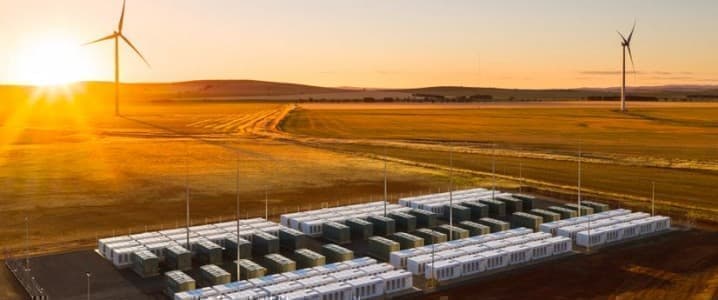240 percent: this is the increase in battery storage capacity added in the United States during the third quarter of this year, compared with the second quarter. 240 percent is certainly an impressive figure—the result of research by Wood Mackenzie and the U.S. Energy Storage Association. What’s more impressive, however, is that this may just be the start of a long-term trend—a much-needed trend for a world that is hoping to someday rely on solar and wind for most of its electricity. Intermittency is the biggest obstacle for solar and wind replacing fossil fuels and nuclear entirely. The sun simply does not shine around the clock—or the year—and the wind does not blow all the time. To make up for this—and to store excess electricity produced during peak sunshine and wind—battery storage has been touted as the simplest and most effective solution.
Even though it is not particularly cheap, at least not yet, battery storage has therefore been on the rise, even figuring as an obligatory part of offers in some tenders for new solar and wind capacity.
In the United States, the third quarter saw battery storage additions of 475 MW, according to Wood Mac and the Energy Storage Association. The great bulk of it was front of the meter storage, the kind that goes with utility-scale solar and wind installations and the kind that is essential for boosting the reliability of solar and wind on a large scale. According to the research, front-of-the-meter storage additions in the third quarter totaled almost 400 MW and 578 MWh, which was more than total storage installed during any other quarter over the last seven years.
The United States had storage capacity of 1.2 GW as of this year. By 2025, this should rise to 7.5 GW, the main drivers being large-scale storage facilities at solar and wind farms, although solar will be in the lead, accounting for most of that capacity. But goals for the longer term are even more ambitious: the Energy Storage Association eyes storage capacity of 100 GW by 2030. That would be a huge increase on the 7.5-GW target for 2025 in just five years. But according to the Wood Mac and ESA researchers, the current record set by utility-scale storage will not hold for very long as additions continue to come online.
Related: Will Biden Seal The Fate Of The U.S. Shale Patch?
Indeed, in California alone, there is more than 500 MW of new battery capacity under construction right now: a 300-MW battery at the site of the former Moss Landing power plant that was idled as California moved further away from fossil fuels, another 100-MW battery to be added to it next year, and a 182.5-MW stack, also to start operating next year at the Moss Landing plant. In addition to these, Cheryl Katz writes for Yale Environment 360, another 100 MW are being built in Long Beach, and construction has started on another 150-MW facility near San Francisco. California has realized that solar and wind need to go with storage.
This massive growth in storage capacity is not without its problems. Californians pay some of the highest electricity bills in the United States. Also, the duration of the storage the massive new facilities provide is not particularly long. While the authors of the third-quarter additions research stopped short of going into details, Yale Environment 360’s Katz noted plans for the Moss Landing site are to eventually have enough storage to power the whole of San Francisco for six hours. Yet almost 600 MW in capacity will not be enough to do that. For context, Tesla’s 300-MW battery storage facility under construction in Australia will be able to store enough electricity to power half a million households for one hour.
This is probably the Achilles heel of energy storage: cost efficiency. To be fair, costs have fallen steeply over the past few years: according to the Energy Information Administration, the cost of battery storage per kWh fell from $2,152 in 2015 to $625 in 2018 and has continued to fall since then. But as skeptics point out, they have yet to evolve enough to be able to completely replace fossil fuels, whose main—perhaps only—advantage over renewables is the reliability of energy supply.
Two hours’ worth of electricity supply is okay for the occasional outage if the sun continues shining and the wind continues blowing. Short-duration energy storage has proved to be a successful replacement for some so-called peaker plants that are only put into operation during peaks of consumption. But what happens when the peak in consumption happens on an overcast day? The answer to this question is not among the topics storage proponents like to discuss, as it implies there are limitations to the technology, and these limitations are potentially serious.
Energy storage technology is continuously evolving, however, and this is the good news. It’s not just about cost declines, it’s also about efficiency. New batteries are being researched and developed in what is a veritable rush to find the Holy Grail of renewables. Because without long-duration, cheap storage, the energy transition may not happen.
By Irina Slav for Oilprice.com
More Top Reads From Oilprice.com:
- Mexico Is Quietly Pushing Out Foreign Oil Investors
- Oil Jumps On Crude Inventory Draw
- Goldman Turns Bullish On Oil: Sees $65 Brent In 2021



















Keep jacking up electricity cost, and a lot more people will be leaving California than are now leaving.